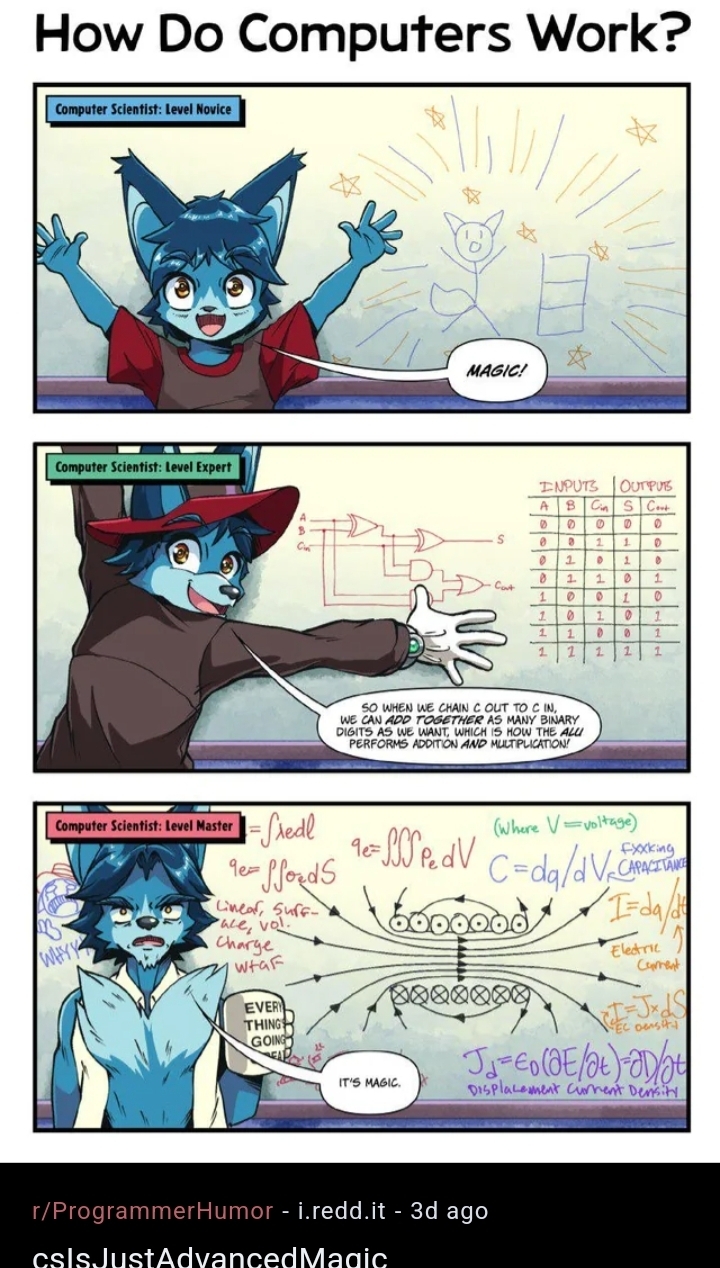this post was submitted on 27 Jul 2024
480 points (99.6% liked)
196
17947 readers
609 users here now
Be sure to follow the rule before you head out.
Rule: You must post before you leave.
Other rules
Behavior rules:
- No bigotry (transphobia, racism, etc…)
- No genocide denial
- No support for authoritarian behaviour (incl. Tankies)
- No namecalling
- Accounts from lemmygrad.ml, threads.net, or hexbear.net are held to higher standards
- Other things seen as cleary bad
Posting rules:
- No AI generated content (DALL-E etc…)
- No advertisements
- No gore / violence
- Mutual aid posts are not allowed
NSFW: NSFW content is permitted but it must be tagged and have content warnings. Anything that doesn't adhere to this will be removed. Content warnings should be added like: [penis], [explicit description of sex]. Non-sexualized breasts of any gender are not considered inappropriate and therefore do not need to be blurred/tagged.
If you have any questions, feel free to contact us on our matrix channel or email.
Other 196's:
founded 2 years ago
MODERATORS
you are viewing a single comment's thread
view the rest of the comments
view the rest of the comments

EE major here. All the equations in the third panel are classical electrodynamics. To explain the semiconductors needed to make the switches to make the gates in the second picture, you really need quantum mechanics. You can get away with "fudged" classical mechanics for approximate calculations, but diodes and transistors are bona fide quantum mechanical devices.
But it's also magic lol.
Quantum Physics Postdoc here. Although technically correct this is also somewhat misleading. You need the band structure of solids, which is due to quantization and Pauli exclusion principle. The same quantum mechanics that explains why we did those strange electron energy levels for atoms in highschool. The majority of quantum mechanics, however, is not required: coherence, spin, entanglement, superposition. In the field we describe semiconductors as quantum 1.0, and devices that use entanglement and superposition (i.e. a quantum computer) as quantum 2.0, and smear everything else in-between. This
Interesting. Does tunneling fall under 1.0 or 2.0? Isn’t it considered a property of classical electrical engineering?
Good question. It would be application specific. I think evanescencnt wave coupling in EM radiation is considered " very classical" (whatever that actually means). But utilizing wave particle duality for tunneling devices is past quantum 1.0 (1.5 maybe?). However, superconductivity tunneling in Josephson junctions in a SQUID is closer to quantum 1.0, but 2.0 if used to generate entangled states for superconducting qbits for quantum computing.
Clear as mud right?
It is now that I’ve looked up the different types of tunneling you mentioned. I didn’t know there were multiple types of tunneling before now.
Thanks for the informative reply and prompting me to do some reading!